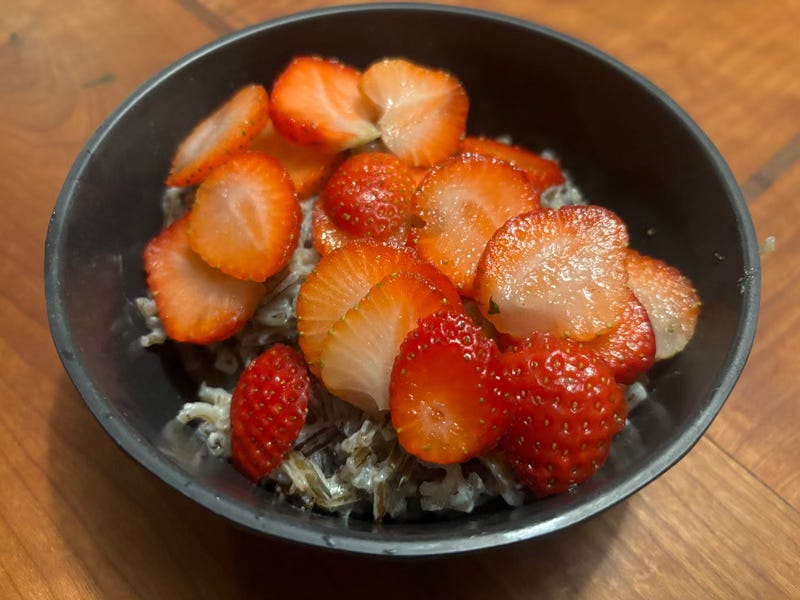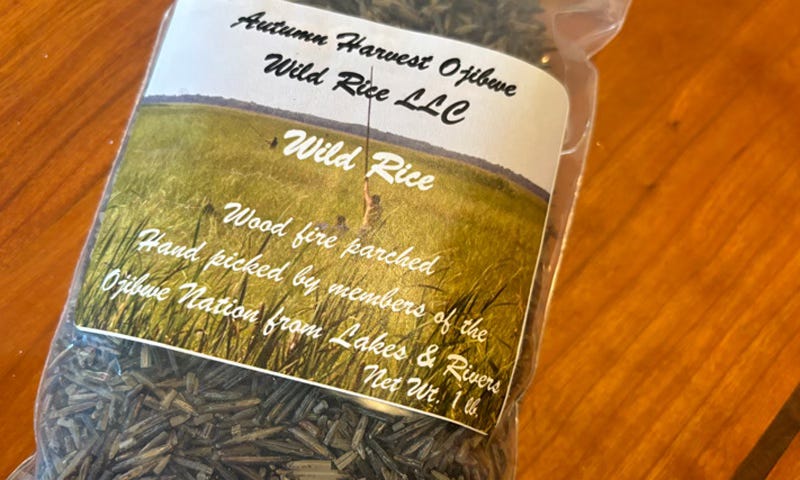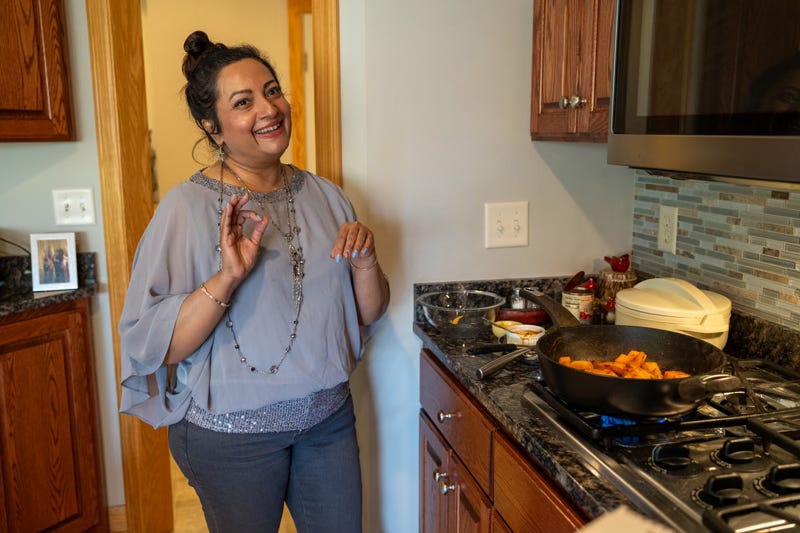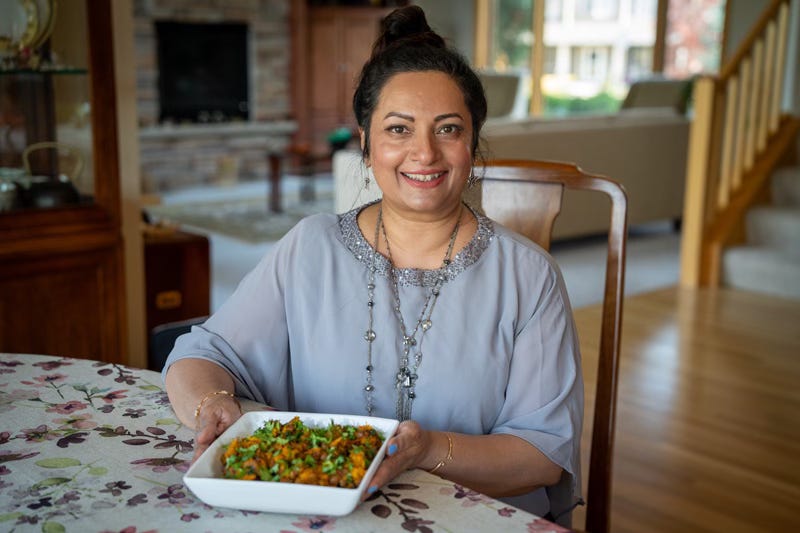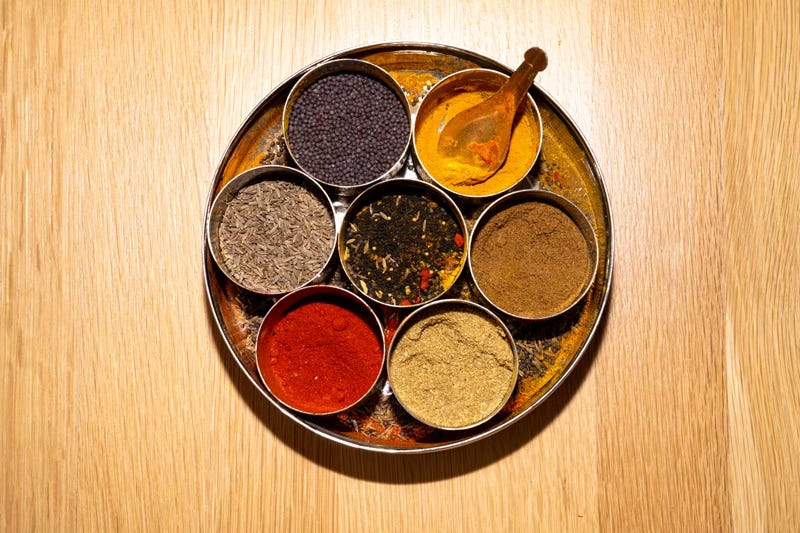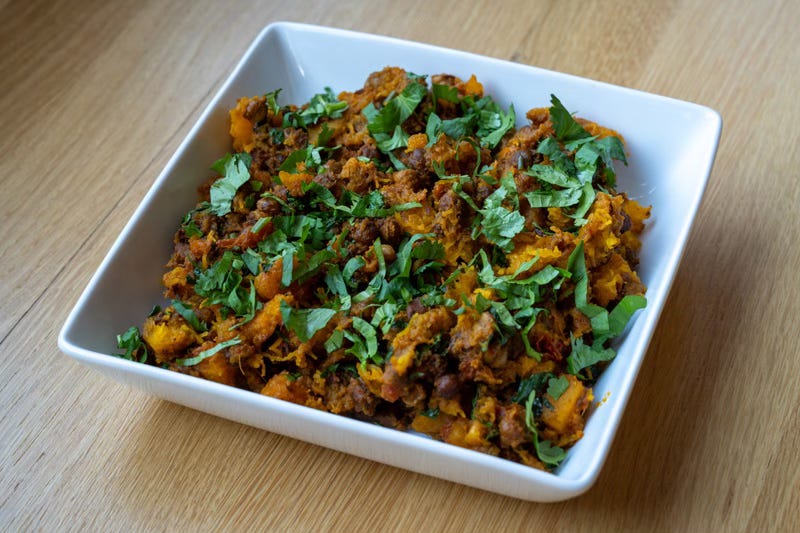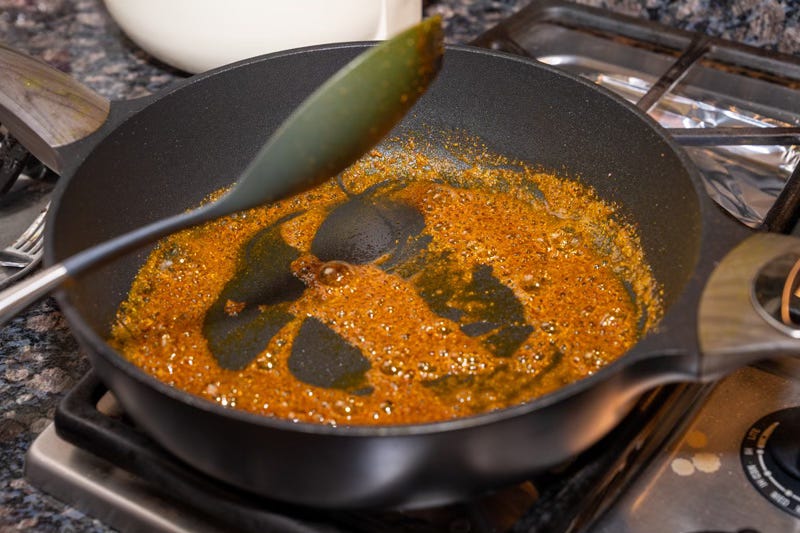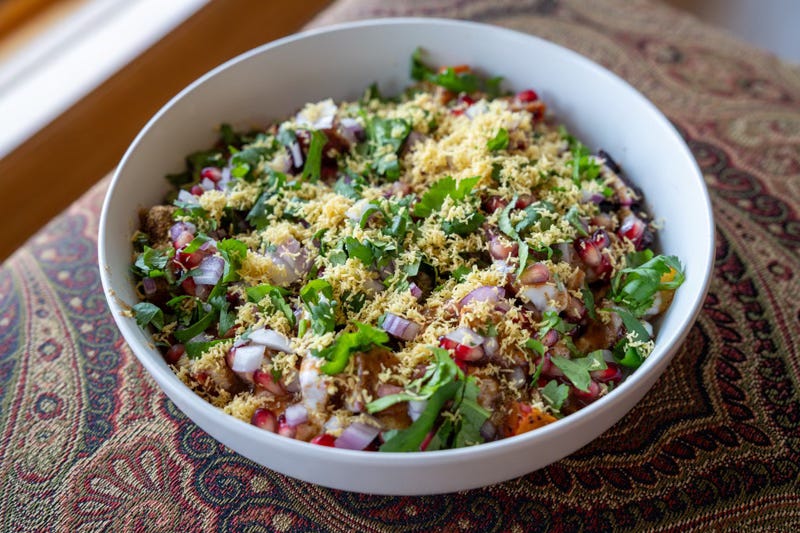This week’s edition of the Hearth is presented in its entirety free of cost to all of our readers, thanks to the generous support of our subscribers and Eastside Food Co-op. If you’d like to support the Heavy Table and receive complete newsletters every Friday, back us on Substack.
MINNESOTA RICE FOR BREAKFAST
By James Norton
At the risk of beating a dead and at this point partially skeletal horse still further, I am a man who is obsessed with making breakfast. It’s an exaggeration to say that my entire existence revolves around the meal I put on the table for my family every morning, but not as much of an exaggeration as I would like.
A recent book review for The Cookbook Test inserted a new breakfast option into my life: a wild rice porridge that recalls the stuff at Hell’s Kitchen, a dish that surely has to rate among the state’s most distinctive and worthwhile breakfast choices. Extra! Extra! Eat All About It is a collection of vintage recipes from Wisconsin newspapers (mostly 100 or more years old), and it features a Breakfast Rice dish that turned out far more deliciously than I’d expected.
It’s simplicity itself to transform wild rice into a tasty meal - everything you need is almost certainly hanging around your kitchen, maybe plus or minus a few fresh berries that are a non load-bearing but certainly delicious addition to the dish.
As for the heart of the matter: There are a lot of wild rice options out there, but I went for the Rolls Royce of wild rice at Eastside Food Co-op: Autumn Harvest Ojibwe Wild Rice. As per the bag, it’s hand picked by members of the Ojibwe Nation and wood fire parched, and I’d describe it as nuttier, more delicate, and more yielding than other varieties I’ve cooked with over the years.
BREAKFAST RICE
Via Extra! Extra! Eat All About It! from the Iron County News, March 14, 1914
1 cup water
1 3/4 cups milk
1 cup wild rice
Pinch salt
Pinch nutmeg
Splash cream if desired
2-3 Tbsp maple syrup if desired
Fresh fruit and/or nuts to top
Rinse rice. In medium pot, bring to low boil milk, water, rice and salt. Cover and simmer on medium until liquid has been absorbed, about 35-45 minutes for wild rice. To serve add nutmeg, cream, maple syrup, and/or fruit if desired.
Eastside is your cooperatively owned grocery store in the heart of Northeast since 2003. We specialize in fresh, local, and organic foods sourced from farmers and producers who care about the health of people and our planet. Eastside Food Co-op is here for good!
AUTUMN SPICE
Mish Sen’s pumpkin curry and root veg chaat serve up a sophisticated taste of fall.
By Stacy Brooks
Mish Sen has a mission: to make Indian cooking accessible to beginners, with dishes easy enough to make on busy weeknights. “I am all about shortcuts. There's no shame in that!” says the Chaska-based cookbook author and influencer. “It doesn’t mean you’re not being authentic.”
She ticks off the misconceptions that people may have about Indian cooking: there are too many ingredients and too many steps, the ingredients are hard to find, it will take too long. “It's a whole bunch of overwhelming scenarios, so then people say, ‘I'll just eat it in the restaurant.’”
“Even for me, being in the culture, I did get very overwhelmed with cookbooks, and I just don't have the patience,” she says. When she moved to the United States from Kolkata at age 21, she was juggling grad school, a new marriage, and finding her bearings in a new culture—she had limited time for cooking. “I was always looking for the shortcut, how do I make this simple? I really had to learn it by trial and error.”
Initially, Sen’s approach was just for herself, as she worked full-time as a seventh grade English teacher and later in digital marketing. When her marketing work ground to a halt in 2020 due to the COVID pandemic, she decided to take advantage of her downtime by focusing on her Instagram account and blog, which feature Indian recipes and instructional videos. It quickly became apparent that she was tapping into an eager audience, and her Instagram account currently has over 35,000 followers. She built on her social media success with a cookbook, Indian Kitchen Secrets: 52 Easy-to-Make Indian Recipes for Beginners, published in 2021.
Sen’s cookbook and online content are intended to show readers that they can cook many Indian dishes with ingredients from their regular grocery stores, no trip to a specialty market required. “You really only need a handful of basic spices—turmeric, whole and ground cumin, whole and ground coriander seeds, chili powder, and a garam masala blend—and you can use them to cook a lot of different dishes,” she explains.
When possible, Sen embraces convenience ingredients, like the premade garam masala spice blend from Frontier Co-op. “They make the best garam masala, so I buy theirs!” Other shortcuts include pre-minced garlic, canned diced tomatoes, and pre-cut butternut squash.
She encourages people to be flexible in their approach to Indian cooking and customize it to their tastes. For example, they can leave off the cilantro garnish if it’s not to their liking, or add chicken broth if they feel it enhances the dish’s flavor. Sen wants people of all backgrounds to see Indian cuisine as something that can be easily cooked at home, and she provided us with a couple of recipes for inspiration.
Sen’s pumpkin/butternut squash curry is an old family recipe. It has a warm, vibrant spice profile (tempering the spices in the oil really makes the flavors shine) and the chickpeas add a nice chew that contrasts with the tenderness of the cooked pumpkin. Sen served us this curry over extra long grain basmati rice, which can be purchased online or at an Indian grocery store.
PUMPKIN/BUTTERNUT SQUASH CURRY
Recipe by Mish Sen
This pumpkin/butternut squash curry is the Bengali Kumro Chokka, a traditional dish made with pumpkin (kumro) and chickpeas (chana). It is a flavorful and nutritious dish commonly prepared in Bengali households.
3 cups pumpkin or butternut squash (kumro), peeled and diced into small cubes
1/2 cup brown chickpeas (kala chana), soaked overnight (canned garbanzo beans can be substituted)
1 tomato, chopped
1 Tbsp ginger paste
1 tsp cumin seeds
1/2 tsp turmeric powder
1 tsp cumin powder
1 tsp coriander powder
1/2 tsp red chili powder
1⁄2 tsp garam masala spice blend
Salt to taste
Fresh cilantro leaves for garnish
Mustard oil (preferred for authentic flavor) or any neutral oil
Heat oil in a pan over medium heat.
Add cumin seeds to the hot oil and let it crackle.
Add ginger paste. Saute until the raw smell of ginger disappears.
Add turmeric powder, cumin powder, coriander powder, and red chili powder. Mix well.
Add the tomato pieces and cook till they are pulpy. Covering and cooking on low for a few minutes speeds up the process.
Add the diced pumpkin and chickpeas to the pan. Mix gently to combine the ingredients.
Add salt to taste and mix well. Sprinkle a little water to help cook the pumpkin.
Cover the pan and let the Kumro Chokka simmer on low heat until the pumpkin is cooked
through but still holds its shape. Stir occasionally to prevent sticking to the bottom of the pan.
Open the lid and with the back of a cooking spoon mash the pumpkin/squash gently.
Sprinkle some garam masala and mix well.
Garnish with cilantro.
The roasted root vegetable chaat contains an impressive range of flavors and textures—our photographer confessed that he never realized parsnips could taste this good. The earthiness of the vegetables is balanced and brightened by the pomegranate seeds, yogurt, and tamarind chutney, and the diced onion and sev add a welcome crunch.
ROASTED ROOT VEGETABLE CHAAT
Recipe by Mish Sen
Chaat is a popular street food built in layers. It’s a medley of flavors and textures and lip
smacking good! Fall vegetables make a great base for a delicious chaat!
Assorted root vegetables (such as 1 medium sweet potato, 1 medium parsnip, 2 medium turnips, 2 medium beets, 1 medium potato), peeled and diced
2 Tbsp olive oil
Salt and pepper to taste
2-3 tsp ground cumin
1 tsp chaat masala (Indian spice blend), divided
1⁄2 lemon, juiced
1⁄4 bunch fresh cilantro leaves, chopped
1 cup plaint yogurt, seasoned with a little salt and slightly sweetened with 1 teaspoon sugar or non-caloric monk fruit sugar
2-3 tsp tamarind chutney (store bought is fine)
1⁄4 onion chopped fine
1/2 cup pomegranate seeds (optional)
Chickpea fries (sev), optional
Preheat your oven to 400°F (200°C.
Place the diced root vegetables on a baking sheet. Drizzle olive oil over the vegetables and season with salt and pepper and some chaat masala. Toss the vegetables to coat them evenly in the oil and seasoning.
Roast the vegetables in the preheated oven for about 30 minutes or until they are tender and slightly caramelized, tossing them halfway through cooking.
Once the vegetables are roasted, transfer them to a mixing bowl.
Sprinkle some more chaat masala over the roasted vegetables and toss to coat them evenly.
Squeeze fresh lemon juice over the chaat for a zesty kick.
Drizzle the yogurt sauce evenly on the roasted veggies.
Add the tamarind chutney (2-3 teaspoons at least).
Garnish with chopped onions and chopped fresh cilantro leaves for added freshness.
Sprinkle pomegranate seeds and chickpea fries (sev) to round up the entire dish!
ACKNOWLEDGEMENTS
This newsletter and the entire Heavy Table magazine presence is made possible by you and everyone else who subscribes to our enterprise, plus the enthusiastic support of [Eastside Food Co-op](https://www.eastsidefood.coop).
This biweekly newsletter is available only to Substack or Patreon supporters of The Heavy Table contributing at the $5/month level or above. Please share it rarely (if ever) and encourage your friends and family to support the website if they find its stories valuable and entertaining. If you have tips, concerns, corrections, complaints, compliments, or just about any other feedback whatsoever, please feel free to email editor James Norton and let him know - he’s at editor@heavytable.com. You can also find him on Blue Sky.




